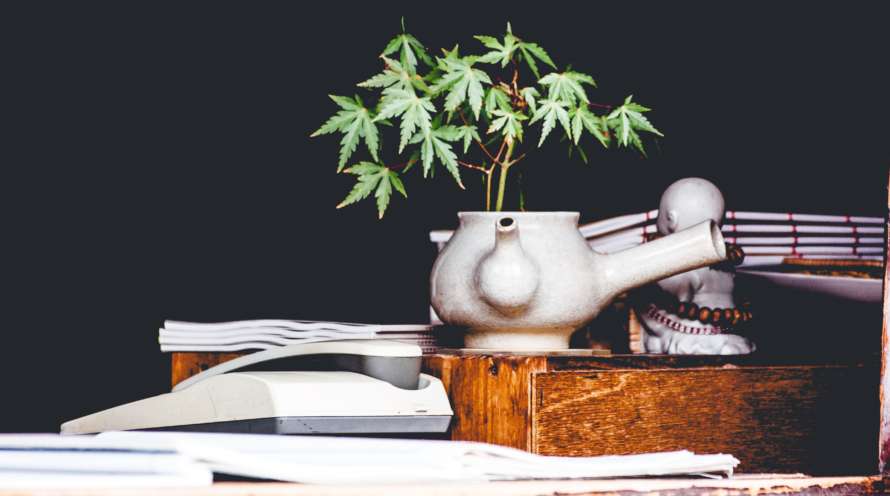Modern Marijuana Growing
Weed and weed cultivation is experiencing a heyday in America. The blossoming market is set to grow and grow. Here, we take a brief look at modern marijuana growing, who’s doing it and how.
But first, I want to tell you a story.
A Visit to An Unusual Garden
I’m 20 kilometers outside of a sleepy, but popular, tourist town in Egypt’s Sinai Peninsula. We’re in the mountains and are standing on a plateau of sorts. Waving in the wind in front of me is a thriving field of poppies and weed. “Ya Marhab!”- Hey, hello! – a Bedouin custodian of the crop shouts at us, raising his AK47 above his head in greeting. “Hala Hala” he tells us beaming, welcome welcome. He swaps to English briefly and becomes momentarily grave, “no photo.”
We get safe passage because of two reasons: we speak a fair bit of the local dialect; we’re young(ish) blonde women, and my friend is a looker.
The poppies and the weed are growing together in shallow but wide trenches dug into the hard ground. This is to help with water retention, an issue in this arid climate. Nearby, a well provides the source of water and feeds the plants through an intricate irrigation system of black pipes. Nearly constant sunshine is the only other food Haj Soliman* is feeding his crops.
The plants look healthy. The wide bulbs on some of the poppies have vertical cuts on their heads. They’ve been milked already. The marijuana plants are tall, bushy, and abundant. The Haj looks pleased with himself, a good season ahead. Given his limited resources and the fact that he has gotten away with growing this illegal garden daringly close to the Egyptian security forces, he has reason to be.
Who Grows This Stuff Anyway?
People have been growing cannabis for centuries. Archeological evidence shows that in Neolithic Chinese culture, the people who lived alongside the Yellow River cultivated the plant. Hemp fibers were woven for clothing and used in pottery. In the settler-era U.S., and prior to the early 20th century, hemp production was actively encouraged. In 1619 it was illegal to not grow cannabis in Virginia.
These days, marijuana is grown by professionals on an industrial scale, and home enthusiasts who want a few personal plants. Then there are people across the world, like the green-thumbed Haj, whose operations provides a comfortable, if illicit, income. Growing weed falls on both sides of the legal divide. From large-scale state-sanctioned farms in one area, to a few illegal plants hiding next to the tomatoes in another.
Owing to the versatility of hemp fibers, the medicinal potential of cannabinoids, and the popularity of weed as a recreational drug, cultivating cannabis is a profitable and promising enterprise.
Supersize My Weed
This profitability has not gone unnoticed by entrepreneurial farmers who have quickly cottoned on to the fact that money can, in fact, grow on trees. In California, the state leading the medicinal marijuana industry, sales generated $2.8 billion in state revenue in 2015. There are projections that by 2020 the industry in California could be worth $16 billion. That’s if the Adult Use of Marijuana Act (AUMA) is passed, allowing the industry to operate in a fully open and legal market. Internationally, the market is set to hit $31.4 billion by 2021.
Supersized farms are springing up across the U.S. and making their presence felt. GFarmaLabs started off life with 4 grow lights and a handful of staff, some of whom hand-rolled joints. Now, the company has 700,000 square feet of growing space and an aptly-named ‘Futurola machine’, which churns out 8,000 perfectly-made joints per day.
They’re not alone. Big players in the industry, like Americann and GW Pharmaceuticals, among others, have seen business boom and the stakes get higher as they vie for market dominance in a rapidly changing environment.
As with any other product, economies of scale dictate. Those with the largest operations will be able to produce the most revenue at the smallest operational cost per item or product. Because of this, farmers are seeking to obtain large tracts of land and supersize our weed.
And Those Plants Next to the Tomatoes?
So where does this industrialization of the industry leave the home grower? Mostly in the same spot. While for many the ease of obtaining weed legally for ‘medicinal’ purposes has meant goodbye to the back-garden companion-planting, others are not so fortunate. For those home enthusiasts who do not have a medicinal marijuana card, or live in a state where it’s still not so easy to obtain a legal high, home-grown pot is as popular as ever.
But the wave of public opinion and the changing legal landscape around recreational weed has benefitted home growers too. These days the internet brings together the best of the industry and the Sunday gardener has a plethora of products available at the click of a button to assist them. From automatic and feminized seeds to hydroponic and aeroponic systems, it’s never been easier to set up a mini operation at home.
And should things go awry the grower need only jump back online and tap into a wide network of forums, reddits, and an abundance of how-to guides to get things back on track.
Under the Radar
Outside of the law, weed is still big business. The number of illegal plantations discovered, and busted, by law enforcement has dropped nationwide in line with the proliferation of the legal industry. But there is still a flourishing black market in America. Vast quantities of weed is grown in states where it is legal and then smuggled across the nation in search of higher prices per pound. Advocates of legalization state that this practice would be swiftly curbed with the advent of full national decriminalization and legalization.
Outside the U.S., enterprising farmer-criminals such as Haj Soliman continue to invest labor and effort into their crops as a means to a steady income. Some of these operations are no small feat. In 2016 in New South Wales, Australia, 3 men were arrested after police discovered a behemoth cultivation warehouse, a “marijuana factory”, existing right under their noses. Over 1500 plants were seized and the sophisticated hydroponic set up dismantled by officers.
In Europe, Albania’s climate offers the ideal growing environment and profiteers have been quick to take advantage of this. Weed is shipped out of Albania and distributed throughout Europe where the prices hit 1,500 euro per kilogram, far greater than the 100-200 euro price tag it would garner if sold in the country that grew it. The small Balkan nation has been dubbed Europe’s outdoor cannabis capital.
The Future
The future of legal marijuana growing and production in the U.S. is inextricably linked to the legalities of the industry. As too is the black market. Given the market research and the projections for both state and private revenue, it would be surprising to see the industry go backwards.
For those operating outside the law at home and abroad, it’s likely that they will continue to do so until such a time as the law catches up with the demand and/or the state realizes that they are missing out on a profitable and regulatable trade.
For the rest of us observers, here’s hoping that 2018 holds many more fun new discoveries, strains, and happy healthy weed. With inventions such as the Futurola, the future is looking bright.
Please don’t take anything you read here as medical or legal advice. If you need medical or legal advice, consult a doctor or lawyer. The articles and content that appear on this website have been written by different people and do not necessarily reflect the views of our organization.


